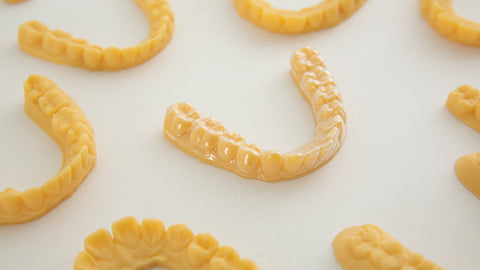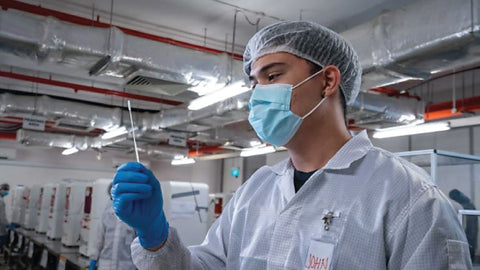Part 1: The Birth Of Clear Aligners
October 14, 19 | 4 mins read
As a 3D printing company, we often get asked crazy questions like, can you print chocolates, pizza or this mug that I am holding right here? While often humorous, it also highlights the lack of public knowledge of how much this technology has enabled a few niche industries. In fact, even when we speak to individuals who are well versed with 3D printing, the various technologies, and applications, most fail to realize how pervasive 3D printing is in dental and more specifically how it gave birth to an entire, multi-billion-dollar industry that is clear aligners.
For most of our readers, they will be aware of the clear aligner market, its massive growth over the last decade, and especially the household name, Invisalign. Align Technology, Invisalign’s parent company, has done such a great job of marketing their brand to the world, that everyone knows who they are, yet has no idea that they are the single largest user of production-scale 3D printers globally.
The Birth of An Industry
The founders, Zia Chishti and Kelsey Wirth, were Stanford grads who spotted an opportunity to leverage technology in the orthodontic world. Neither were Orthodontists by trade, but they had a vision of how clear plastic could change orthodontic treatment. By hiring a few fellow alumni, they formed Align Technology. Going the typical Silicon Valley route, they raised a large amount of funding from well-known VCs and launched their Invisalign product. Using the funds they would go on to develop advanced software and define the process of clear aligner fabrication using 3D printing and thermoforming and creating a lot of IP along the way (Align Technology has over 650 patents worldwide). Despite setbacks in the early years and a large focus on marketing direct to consumer, two decades later the company has come out on top. Invisalign hit their 4 millionth patient last year (2016) in September and $1 billion in sales in 2016. As it stands today, Invisalign claim around an 11% market share of their addressable market globally. Maybe the clear aligner industry isn’t so niche after all.
How It's Made
 Most of our readers will have a general idea of how clear aligners are fabricated, but we will go into it quickly here just to recap the process. In a simplified world, clear aligners are made in 4 steps:
Most of our readers will have a general idea of how clear aligners are fabricated, but we will go into it quickly here just to recap the process. In a simplified world, clear aligners are made in 4 steps:
Step 1: An orthodontist takes a patient’s impression (traditionally - stone models which are then digitized through a desktop scanner - or intraoral scanning)
Step 2: The scan is loaded into the design software where the technician cleans up the data, and sets up the treatment plan based on a list of guidelines (eg. How much teeth movement is allowed at each step). This creates a series of steps in which the teeth will gradually move towards the desired outcome. This can take anywhere from a 2-3 steps up to 50-60 steps, depending on the complexity of the case.
Step 3: The file is exported to a 3D printer, and each step of the treatment plan is printed out as physical models which will act as moulds for the next process.
Step 4: Using a thermoforming machine, thin, durable plastic sheets are thermoformed over the models, removed and cut to produce your final aligner.
Prior to really understanding the workflow, one may ask why does 3D printing really need to be involved in this process. The answer is simple, without 3D printing, we would not be able to print out the series of “future” steps of the tooth movement. Because the treatment planning process is done virtually and forward in time, there is no other viable, scalable way to get a physical version of that 3D object other than 3D printing.
Why Don't We Directly Print an Aligner?
The other burning question (which we get all the time) is, why can’t we print the aligner directly and skip step 3, probably the most laborious, time consuming part of the process. This is the “holy grail” of 3D printing in Orthodontics. From our point of view, there are a few main challenges here. Thermoplastics have properties which are extremely difficult to mimic in photopolymer-based chemistry at the moment. Some of the main requirements from this material are:
- To be hard and tough
- Yet flexible and rigid
- Optically Clear (invisible in the mouth)
- FDA approved
- Economical
There are existing 3D printing materials in the market that have a combination of some of these characteristics, but none, to our knowledge, possess all.
What's Next?
The story of Align Technology is an impressive one. From our perspective, it shows how new technologies not only improve workflows like digital dentistry for example but also give birth to entirely new industries. It took 20 years for Align to get to where they are today, a $12 billion company. Thanks to pioneers like Align Technology, the door is wide open to other innovative products in the dental space using 3D printing technologies. Orthodontics is just the start. The power of 3D printing has yet to be fully utilized.



